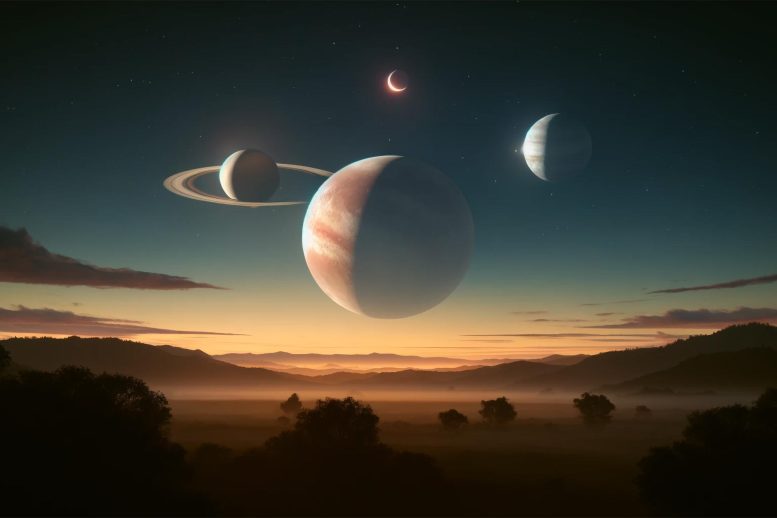
The June night sky features planetary movements with Mars and Saturn visible early in the month and Jupiter reappearing later. Key events include alignments of Mars and the Moon early in June and a more significant alignment of Saturn, Mars, Jupiter, and the Moon on June 29.
Planets rule the a.m., and what’s that bright light?
Saturn and Mars continue to dominate the morning sky, but they’re joined by Jupiter as the month goes on. And we have some tips for identifying some commonly seen objects in the night sky.
Highlights
- All month – All the planetary action continues to be in the morning sky, with Saturn and Mars rising in the early morning hours. They are joined later in the month by Jupiter.
- June 2 – In the hour before sunrise, reddish Mars hangs just beneath the crescent Moon. Find the pair low in the east with Saturn lurking nearby, toward the south.
- June 3 – The crescent Moon sits beneath Mars in morning twilight. Look for them low in the eastern sky.
- June 6 – New moon
- June 21 – Full moon
- June 24 – Jupiter is now visible low in the east before sunrise. Look for the bright planet around 10 degrees above the horizon this final week of June, forming a line with Mars and Saturn that stretches toward the south.
- June 27 – Look for the Moon rising in the east with Saturn around midnight. By dawn this morning, you’ll find them high in the southern sky. They appear super close together – close enough to appear in the same field of view through binoculars.
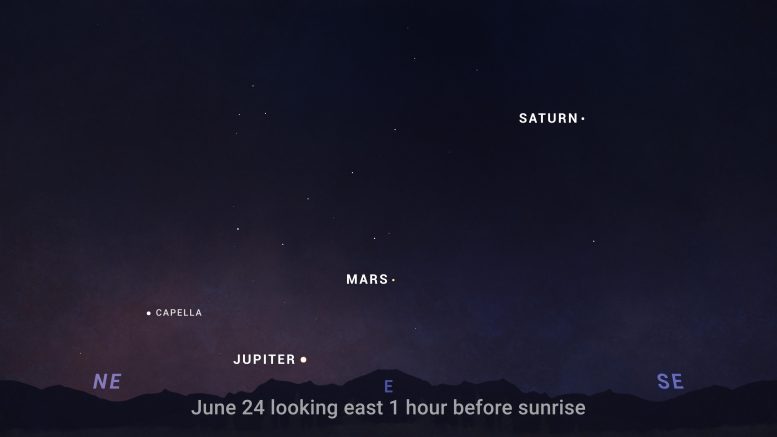
Sky chart showing the planets’ Saturn, Mars, and Jupiter forming a diagonal line across the morning sky in late June. Credit: NASA/JPL-Caltech
Video Transcript:
What’s Up for June? Saturn and Mars meet up with the Moon, Jupiter returns at dawn, and tips for identifying some common objects seen in the sky.
On June 2nd in the hour before sunrise, reddish Mars hangs beneath the crescent Moon. Find the pair low in the east with Saturn lurking nearby. The following morning, on June 3rd, the Moon has moved so that it sits beneath Mars.
During the last week of June, giant Jupiter re-emerges as a morning planet, after passing behind the Sun, from our point of view on Earth, over the past couple of months. By June 24th, you can find it about 10 degrees above the horizon as the morning sky begins to brighten. It climbs a little higher each morning after that as July approaches.
Then on June 27th, look for the Moon with Saturn. The pair rise around midnight, and by dawn you’ll find them high in the southern sky. They appear super close together this morning – close enough to appear in the same field of view through binoculars.
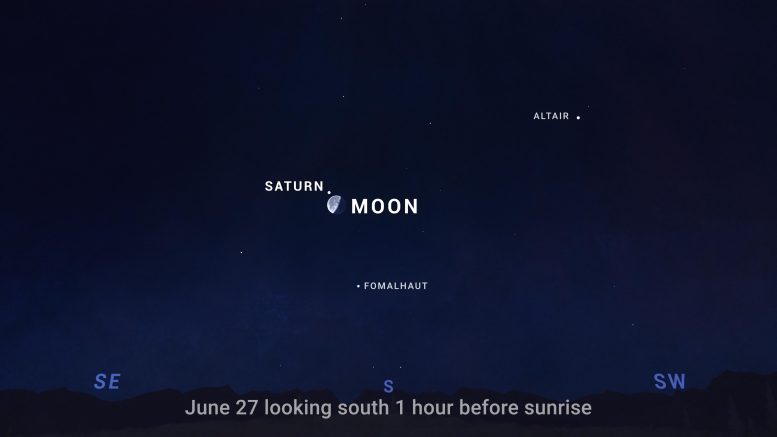
Sky chart showing the pre-dawn sky on June 3, with Saturn, Mars, and the crescent Moon. Credit: NASA/JPL-Caltech
When you spot bright or moving objects in the night sky, it might not be immediately clear what you’re looking at. Is that a planet, or just a bright star? Is it a satellite, or maybe just an airplane? Here are a few quick tips on how to tell the difference.
First, there are five planets that are easily observed with the unaided eye. Of these, two planets – Venus and Jupiter – can sometimes appear incredibly bright, like shining beacons in the sky. The other planets are much less bright, but still generally shine as brightly as bright stars.
The big tipoff that you’re looking at a star and not a planet is that planets tend to shine steadily, whereas stars twinkle. Stars are so far away that they’re just points of light, and ripples in our atmosphere easily distort them, causing the familiar flicker. The planets are relatively closeby, being here in our solar system. Through binoculars or a telescope, instead of a single point, planets show us a tiny disk or crescent that’s illuminated by the Sun. So even though they appear star-like to the eye, the light from a planet is coming from a slightly more spread-out area, making planets appear more constant in brightness. Both planets and stars rise in the east and set in the west, and they move very slowly across the sky during the night.
But what if you see an object that’s moving? Distant aircraft are usually pretty easy to identify, because they follow a slow, steady path that’s straight or gently curving. They have exterior lights that flash in a regular pattern, often including a red beacon.
Satellites tend to be most visible in the hour or so after dark or before dawn, when it’s night here on the surface, but the satellites are high enough in the sky to be illuminated by sunlight. They’re generally fainter than aircraft, and move in slow, very steady, very straight paths. They might briefly flare in brightness, but they don’t have lights that blink.
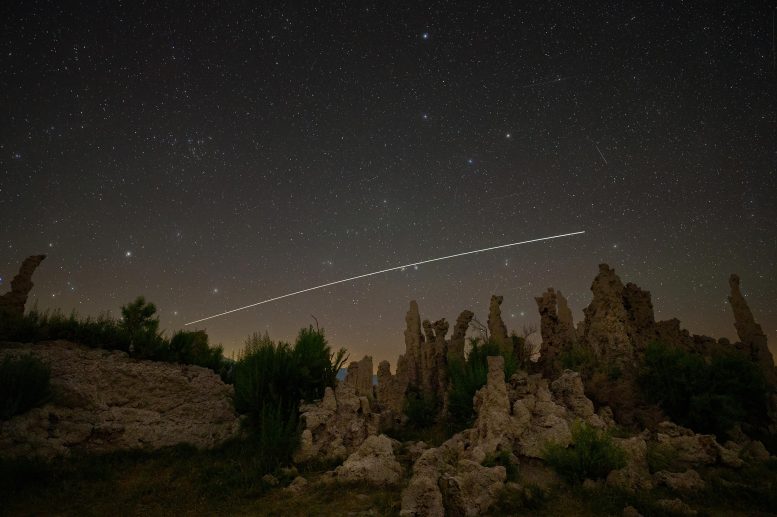
The International Space Station traces its path across the twilight sky over a California desert landscape. Credit: NASA/Preston Dyches
The International Space Station (ISS) is an exception, because it’s very bright, and is often visible for long enough to observe the curving path of its orbit. But it doesn’t have flashing lights you can see from the ground, and it does something else satellites do: Satellites often fade out of view as they travel into Earth’s shadow, or fade into view as they emerge. And occasionally you might see a train of satellites moving slowly and silently in formation.
One other sight that’s sometimes confusing is rocket launches that happen soon after sunset or before sunrise. Similar to spotting satellites, this is when it’s darker here on the ground, but launching rockets climb high enough to be illuminated by sunlight. When rockets launching at these times of day get really high in altitude, their exhaust can be brilliantly illuminated, and sometimes you might even see spiral or circular shapes that slowly grow and then dissipate, as a spent rocket stage empties its propellant into space.
With so much to see in the night sky, it’s helpful to be familiar with some of these common sights, so you can get on with your skywatching and investigate whatever mysteries and wonders you’re in search of.
Here are the phases of the Moon for June.

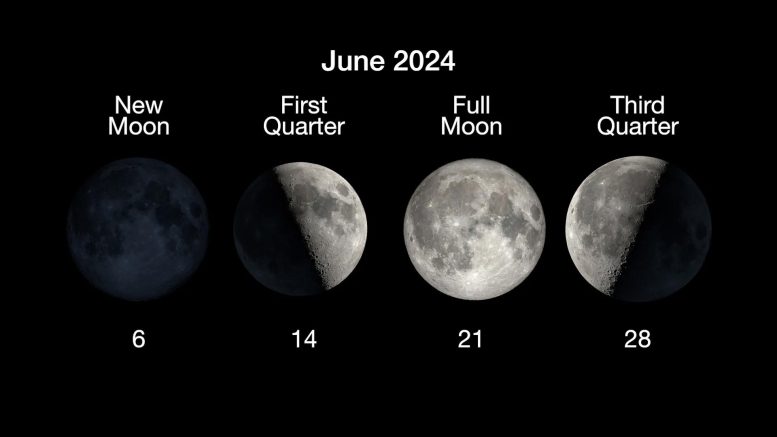

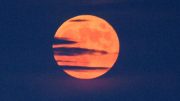






Hello sir namaste god bless all family members danke und cyber security settings gruss Rajveer Singh sun of karnail singh batth village kotala bet po chhourian district Ludhiana Punjab India thanks for alls